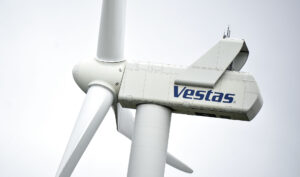Den lave efterspørgsel på olie holder olieprisen nede. UniCredit venter, at den holder sig på 40-45 dollar resten af året. OPEC-landene har ikke formået at sænke produktionen og presse prisen i vejret. OPEC har ikke været så svag som under coronakrisen.
Demand weakness poses a new dilemma for OPEC+
■ The global oil demand outlook has weakened as a result of the uncertain path of the coronavirus.
■ July’s decision by OPEC+ to increase production is proving premature – especially considering the high levels of OECD inventories.
■ Given the delicate political equilibrium that characterizes OPEC+ these days, the cartel is unlikely to deepen curbs unless a second global wave of contagion materializes.
The risk of procrastination in the name of the apparent unity of the cartel is to fall behind the market instead of leading it. This week OPEC turns sixty – an anniversary that comes at a critical moment in its history. While its pricing power has waxed and waned throughout its life, its ability to steer the oil market in its favor has never been put in question to the extent it is now.
The failure to strike a deal back in March, when the pandemic began to spread across the world, triggered an unprecedented price war that ended with the WTI benchmark deep into negative territory for the first time ever, with the ambitious April deal, which envisaged output curbs to the tune of 9.7mb/d, only partly repairing the damage.
However, July’s decision to scale back cuts to 7.7mb/d from August until December, which was driven by fears of a massive drop in compliance, is proving to be too rushed at a time of highly uncertain global demand.
In our latest Oil Update back in July, we argued that it was premature for OPEC+ to increase production because OECD inventories were at unprecedented levels and it would have taken months for the market to absorb them, even in the absence of a second wave of contagion.
Since then, the global demand outlook has weakened as a result of the health crisis, forcing both OPEC and the International Energy Agency (IEA) to lower their forecasts earlier this week, by around 0.5mb/d for the rest of the year – a marginal change that still represents more than twice as much as Libya’s production in 2020.
After the strong rebound between May and July, when most economies gradually reopened, the recovery in demand has since lost its shine for two reasons. First, a stabilization was inevitable after the technical rebound that followed the Great Lockdown. Second, the number of new COVID-19 cases intensified more than expected in some countries like Spain or France, while in other places, particularly in emerging economies, the health crisis never really abated.

The resurgence of the coronavirus is negatively impacting mobility in most advanced economies as well. Smart working arrangements are likely to be extended in many industries for longer than originally expected, thus reducing the number of commuting trips. Moreover, the changes in lifestyle induced by the pandemic continue to weigh on sectors where physical interaction is key, such as tourism, recreation and large events, and this is indirectly impacting other industries such as aviation.
China, by contrast, remains the only bright spot on the demand front. The Chinese economy is in the midst of a sort of V-shaped recovery that is providing some relief to oil producers. Infrastructure and construction initially led the way, but the recovery is broadening to the services sector as well, thanks to successful control of the virus.
According to news reports from Reuters, there is no appetite at the moment to restrict production once again.
If the demand outlook does not worsen further and US producers continue to remain reluctant to ramp up production, Brent prices are likely to remain within the USD 40-45/bbl range for the rest of the year, with downside risks to this forecast should contagion reemerge forcefully.









